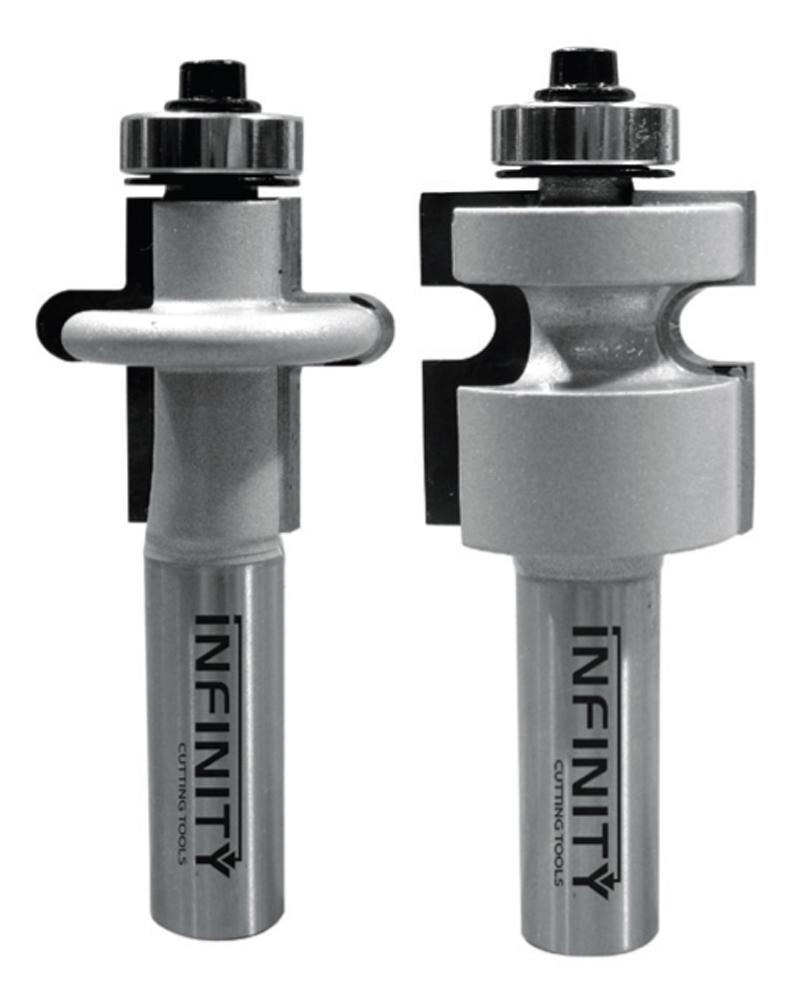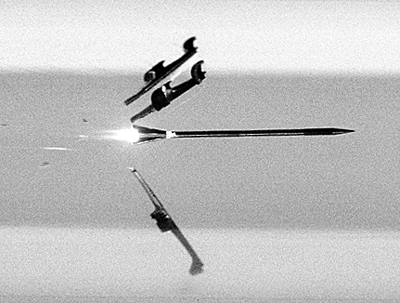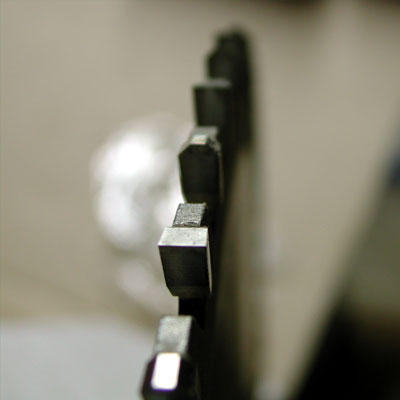I can remember my dad’s old table saw blades. Those suckers were all high speed steel, with the teeth alternately set to clear a kerf in the wood. And, I can also recall my dad complaining that they were dull and had to be sharpened all the time. What would have fixed this problem was maybe something that could stay harder and sharper between sharpenings …
Enter carbide. These little bits of material are braised on to the teeth of these saws or the cutting edges of router bits help blades cut more cleanly while holding their cutting edge for a longer time. But, what the heck is carbide, and how can you tell what you are getting?
 That’s the question I posed to David Venditto of Infinity Cutting Tools, and, boy, were my eyes about to be opened!
That’s the question I posed to David Venditto of Infinity Cutting Tools, and, boy, were my eyes about to be opened!
Carbide – more specifically tungsten carbide – is a combination of tungsten and carbon, arranged in an elemental structure that resembles common grains of salt. The substance starts out as a powder, but then is cast in a process known as sintering with a metallic binder to form the individual teeth or cutting edges. Under a microscope, these carbide cutters resemble concrete with the carbide serving as the aggregate and the metallic binder serving as the cement holding everything together.
Carbide cutting edges are exceptionally hard, and can only be sharpened with diamonds or other similar abrasives. So hard, in fact, that the United States Army uses tungsten carbide in certain circumstances as a tank armor penetrator instead of depleted uranium in their anti-tank rounds. That’s why you can’t simply use a water or oil stone to touch up your carbide cutting edges. The carbide would wear a track right through your stone. Diamond stones can be used to touch up an edge, but do so slowly… and just a few passes. For complex profiles on router bits or for teeth on a table saw blade, you might want to look at sending the blade off for some professional sharpening.
While all carbide is made of the same stuff, there are many different grades of carbides out there, and grade selection can make or break how well your tools perform. For instance, the C number of the carbide tells you just how hard the carbide matrix is. Something like C2 carbide isn’t quite as hard as C3 or C4 carbide. The harder stuff gives you a much better finish, but it’s far more brittle. So, while C2 may survive contact with a nail, C4 would be more likely to shatter.
The other think to keep in mind is that the size of the grain of the carbide which is sintered into the carbide cutter. The finer bits of carbide embedded in the matrix, the more finely the edges can be ground, giving a smoother cut. Larger, chunkier bits of carbide embedded into the matrix makes them less prone to handle impact with wood, so you could see the edges become dull faster.
Another thing to keep in mind – while all carbide is made of the same stuff, poor quality carbides will be sintered with a lot of bubbles in it. The more porous the carbide tips produced by using less expensive manufacturing processes fail to hold their sharp edges. That’s why premium carbide blades cost significantly more, but produce far superior results.
Just as important as carbide manufacturing is how the tips are attached to the blade or cutters. The process is known as brazing, in which a blend of metals are placed on the steel of the blade or bit body, heated and then the carbide is attached. David told me that the formula they use for their blades and bits not only hold the cutters to the blade or bit, it also serves as a form of a shock buffer, helping the teeth better withstand the impact of cutting into wood.
While carbide is very tough stuff, there are some simple things you can do to help prolong the life of your saw blades and bits:
- First, be careful when handling your blades and bits. Because the carbide is just so hard, you can chip the teeth or cutters if you put them down roughly on a hard surface like your table saw top.
- Keep your blades and bits clean. Pitch build up on the blades can block the sharp cutting edges of the carbides, forcing you to push the work harder and increasing the heat generated by friction, leading to more burning. You can use a number of different cleaning products, but stay away from caustic oven cleaners, which can affect the braising used to hold the teeth on the blade or bit.
- And, finally, remember that carbide does dull. If you notice more friction and rougher cuts, or the edges of the cutters look chipped, bring the blade or bit in for a little TLC. Your effort will be rewarded.
While my dad’s old circular saw blades without the carbide inserts aren’t going to get a lot of time in my shop, they are awesome for the obligatory saw blade shop clock. That’s a pretty good use for them!




I bought a couple of high quality Carbide router bits recently, and they “cut like butta”
(But, man, I think my first car cost less! lol)
Great information packed article Tom.
Thanks.